Bottom Line Up Front
Plug it in, turn it on, Darn it, my coin acceptor does nothing. OK, so what’s this orange (amber) LED all about?
TL;DR
I got such a deal. So, I saw an auction for a dozen Microcoin QLs, about $100 + shipping. That’s a great price; half-off! To get a new QL, I’d need to add a zero at the end. The lot had various years: 2013, 2015, two from 2019. What could go wrong? I should have known better. A sucker is born every minute. BTW, There’s no evidence that PT Barnum actually said that [wiki]. Anyway, if they just-worked, I wouldn’t be on this adventure.
I’m impatient so I Just wanted to plug it in. We don’t need [to worry about] no magic smoke. That’s what protective diodes are for, right? Well, I’m not that reckless! I did a little research before plugging it in. Williams pinball machines from the late eighties use the Williams Pinball Controller [WPC89], the architecture, its schematics are readily available [Xmission]. Within a WMS pinball, there’s a coin door interface, just a PCB with several connectors, typically a Molex 0.1” or 0.156” (3.96mm) header. Well ops, the coin door interface is actually found in the game specific operator’s manual, not the architecture / schematic. My bad. The image below is from the [Safe Cracker] manual; I show the connector for a coin-acceptor:
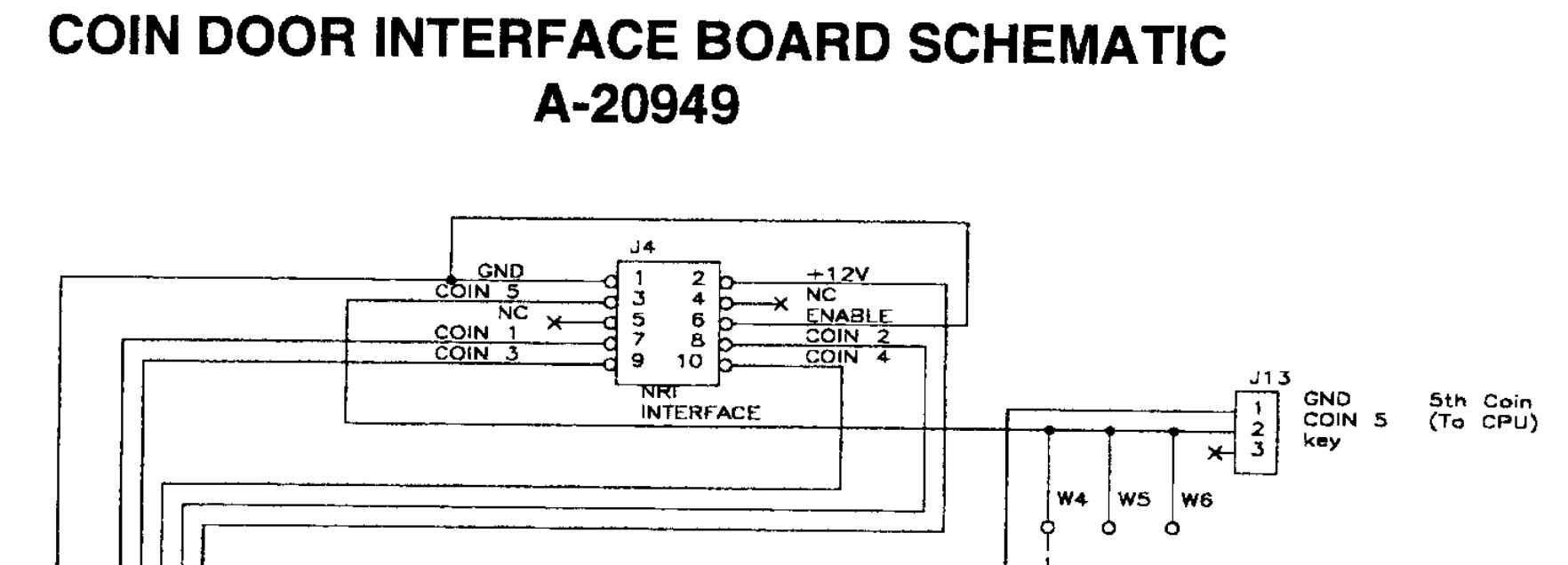
The coin door schematic denotes an “NRI Interface”. Cool. Oh, NRI refers to National Rejectors Inc. (NRI) GmbH, and is / was renowned for its “G-13 market leading 3.5 inch electronic coin validator that set the standards with its unique Multi-Frequency Technology (MFT) validation”. Yeah, that’s the marketing hype from the Google top entry. The G-13 has been around for more than a decade. And I believe NRI is now owned by Crane (?) Like the QL, the G-13 is programmable (via dip switches) and has an A & B memory block of learned coins. I may need to correct / edit that prior sentence, bear with me.
Here, I was excited to see that the pinout matched what I saw in the pinball and from the NRI manual. Here’s a link to the G-13 manual off the [Suzo Happ] website:
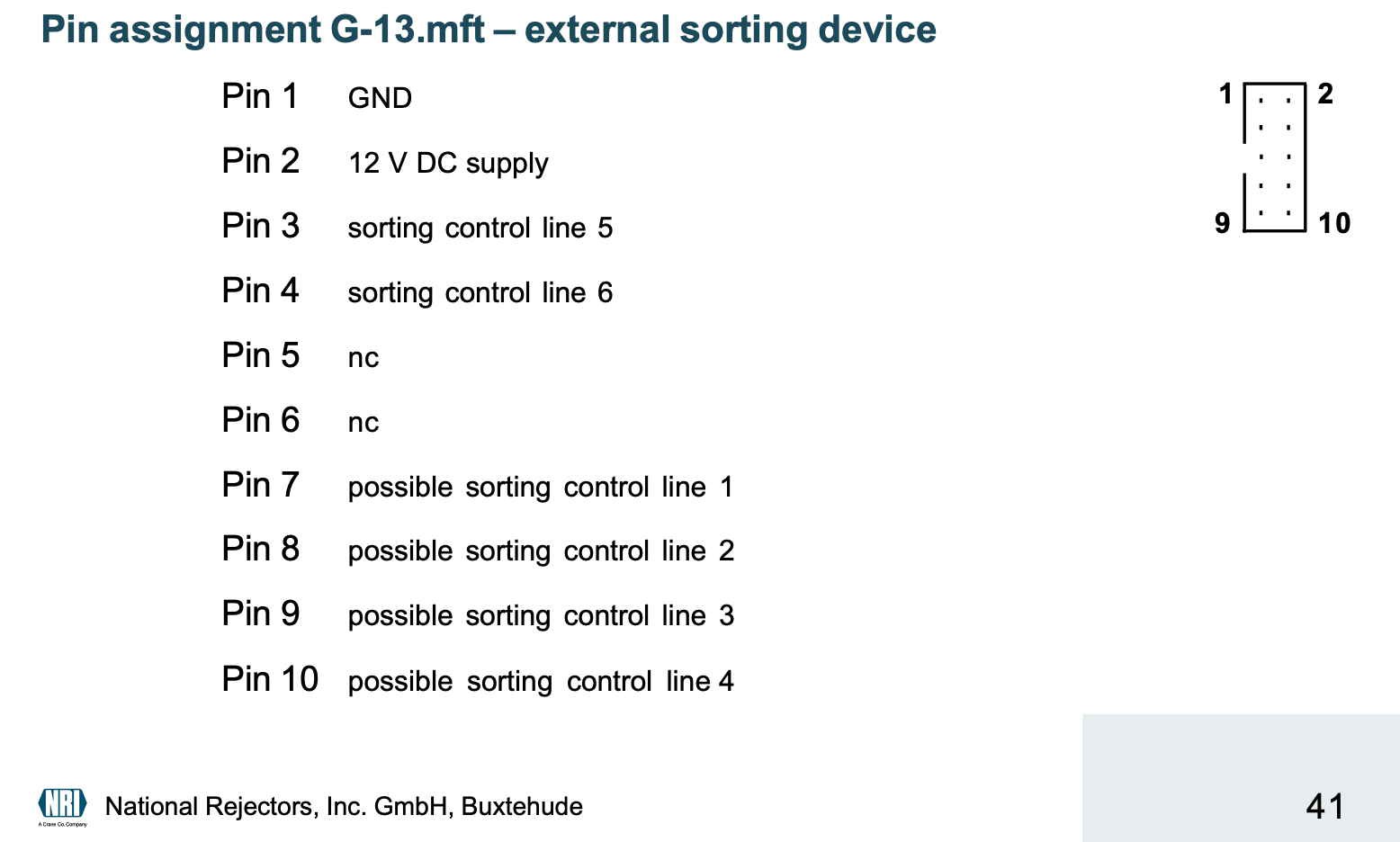
So what about the connector for the Microcoin QL? This is where standards are good, expected. Here’s the figure from Microcoin’s QL Technical Data [Microcoin]. A match; GND and +12VDC are on the same pins:
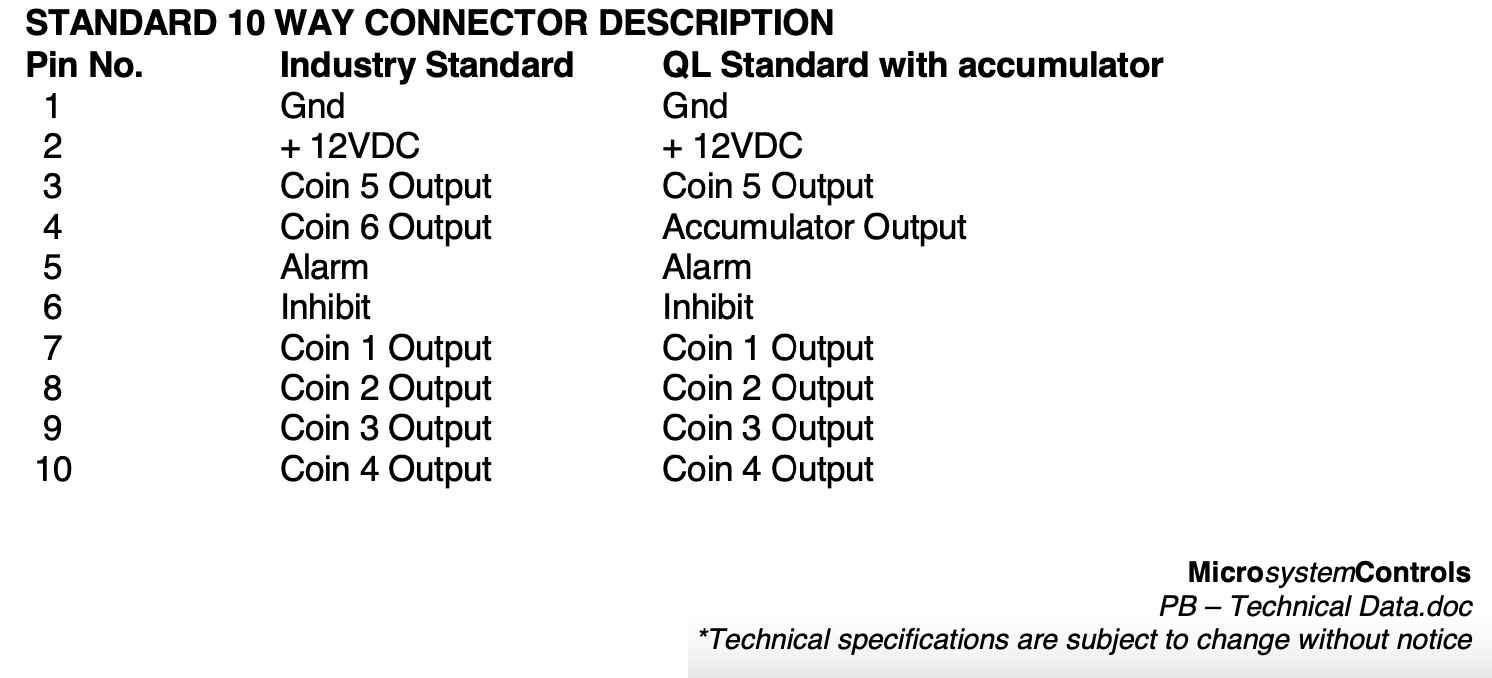
Both ends use a female 2.54 mm pitch, 10 pin 2×5 connector (2 rows of 5 pins) at the pinball coin-door interface and on the QL coin acceptor. For me, pin 1 (ground) had a red wire. Gosh, it’s size and appearance seemed so ubiquitous / familiar, like the old IDE disk drive and floppy drive connectors of yore, but smaller (only ten pins.) In fact, the same pitch is used for the ribbon cables used within the WMS pinball machines. I’ll note that the coin-acceptor’s connector had a directional tab; you could only insert the connector into the male housing in a single direction, and unlike the cables used in pinball. I have had many a yikes moment there! Aren’t standards great.
Let’s wire this puppy up.
Ugh, the LED is orange (amber) Ain’t it supposed to be green?
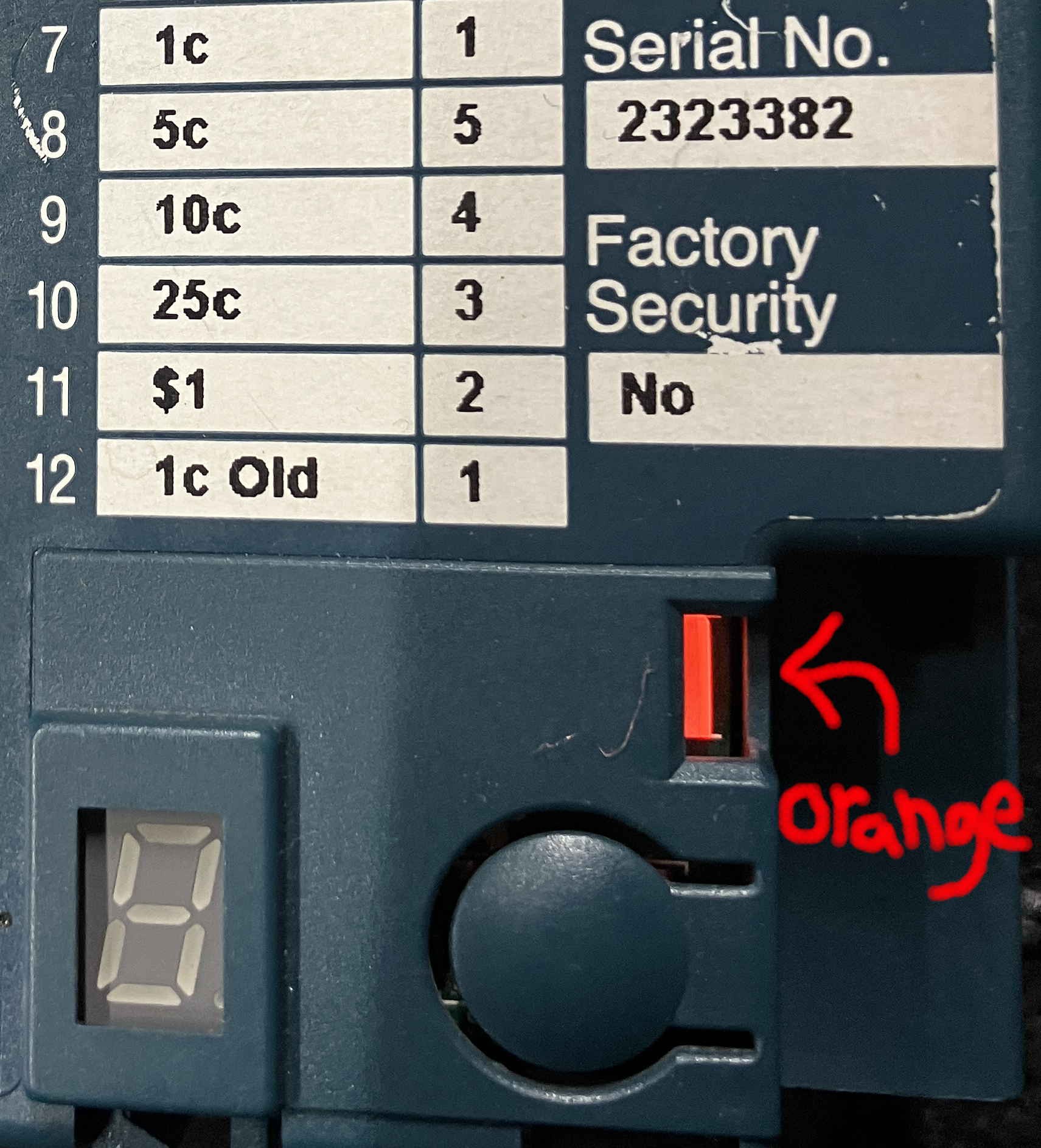
Note, discerning the difference between an orange (amber) LED and a red LED was subtle. I will write about that test shortly. Spoiler alert, it involves jamming cardboard across the optos
If you don’t succeeded, repeat the same process over and over again. Yeah, I tried every one of my newly acquired coin acceptors. The LED was orange on everyone.
Back to the orange LED. Strictly, RFTM. Microcoin’s quick reference guide tells you that if the LED is amber (some manuals say orange), then the acceptor is “disabled”:

At this point, all kinds of questions are going through my mind: Permanently disabled? I spent $100 on junk? Was the acceptor used at a Las Vegas casino for a decade; a billion coins passing through it, wearing it out? Perhaps it has a built in shutdown at a prescribed End of Life, it self-destructs. Amazing how the brain can runaway with crazy ideas.
Speaking of coin paths. I mention the reject path above. The NRI manual had a nice visualization of a coin’s successful and failed pathway. Pretty cool:
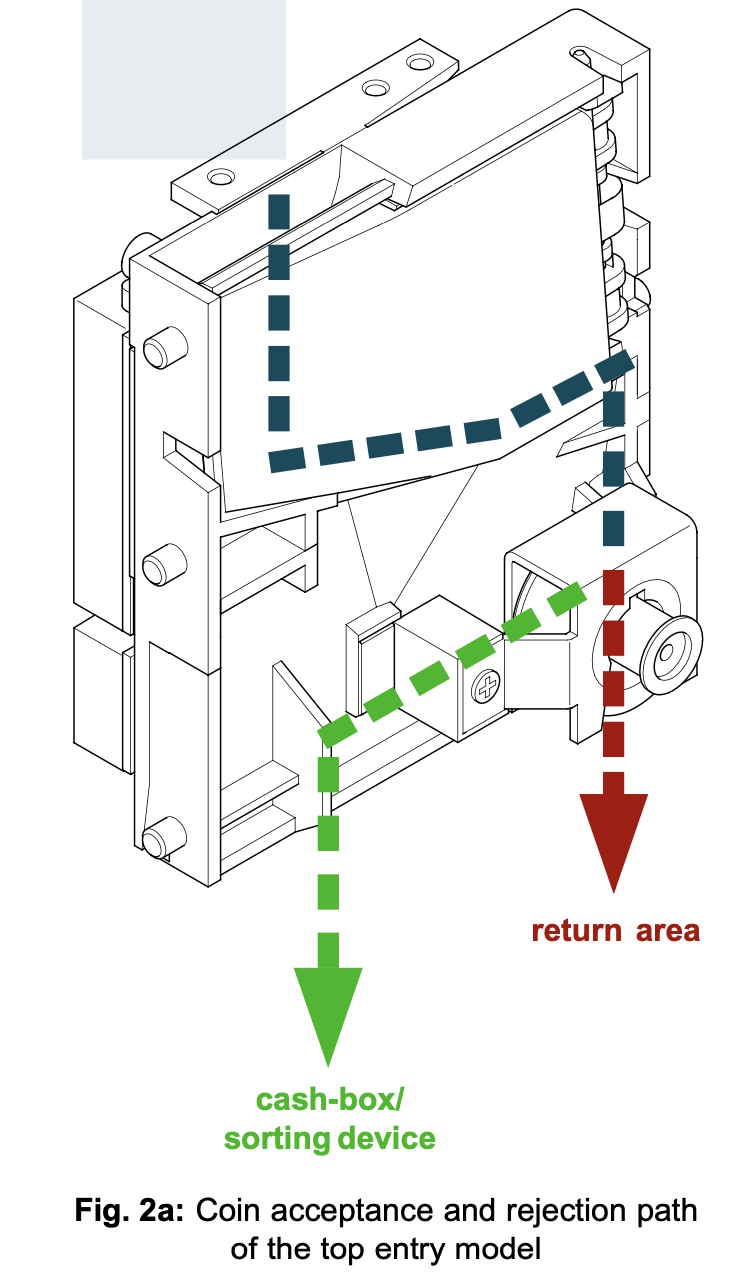
Ok, I know all you owner operators of vending equipment and Gaming devices might be chuckling at my over simplifications. but the story continues. The devil is in the real detail. I’m getting there.
Discussions
Become a Hackaday.io Member
Create an account to leave a comment. Already have an account? Log In.